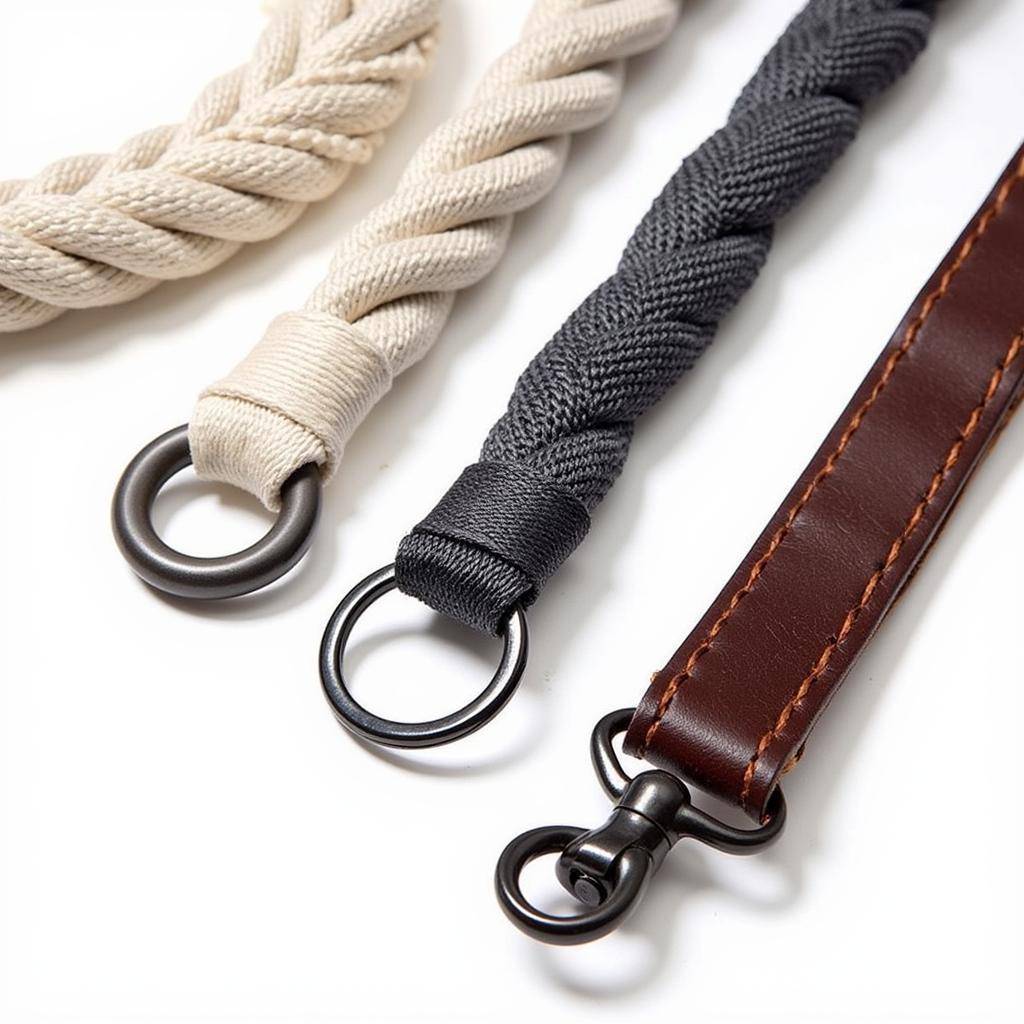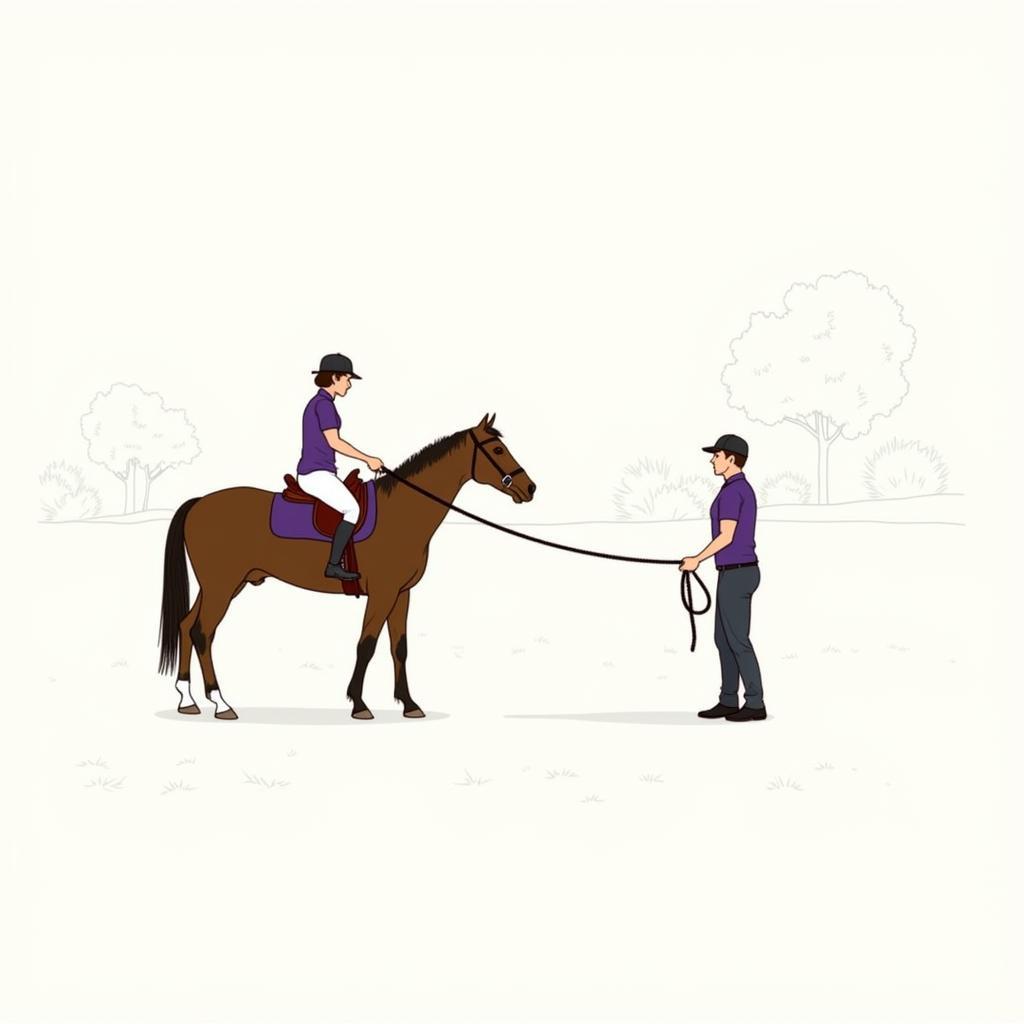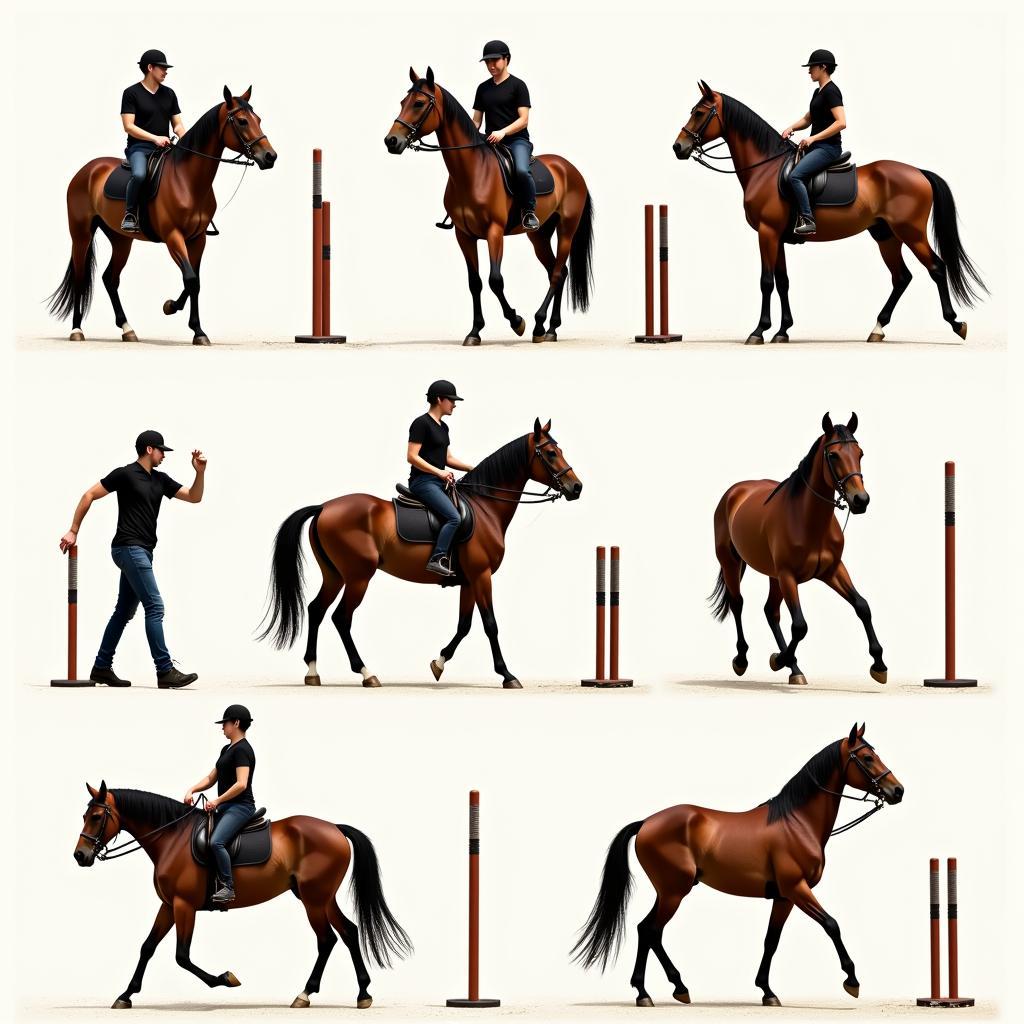A Horse Lunge Rope is an essential tool for any horse owner, offering a multitude of training and exercise benefits. From improving fitness to refining communication between horse and handler, a lunge rope can become your secret weapon in unlocking your equine partner’s full potential.
Choosing the Right Lunge Rope
Selecting the appropriate lunge rope is crucial for effective and safe training sessions. But with so many options available, how do you choose the right one?
Material Matters:
Lunge ropes come in various materials, each with pros and cons:
- Cotton: Soft on the hands and gentler for young or sensitive horses.
- Nylon: Durable, easy to clean, and often weather-resistant.
- Leather: Classic choice, offering a good grip but requiring proper care.
 Different Horse Lunge Rope Materials
Different Horse Lunge Rope Materials
Size Does Matter:
The length of your lunge rope directly impacts the size of the circle your horse works in.
- Shorter ropes (around 12-15ft): Ideal for groundwork and introducing lungeing.
- Longer ropes (20-30ft): Allow for a larger working circle, suitable for more advanced training.
Consider the Clips:
- Swivel snaps: Prevent the rope from twisting and tangling.
- Panic snaps: Offer an added safety measure by releasing under pressure.
Lungeing for Success: Essential Techniques
Lungeing isn’t just about making your horse run in circles; it’s about purposeful movement and clear communication.
Finding Your Footing:
Maintain a safe distance from your horse, positioning yourself slightly behind their drive line (an imaginary line running from the horse’s hindquarters through their body).
 Proper Posture When Lungeing a Horse
Proper Posture When Lungeing a Horse
Body Language Speaks Volumes:
Use clear and consistent body language to direct your horse:
- Forward movement: Point your shoulder and your lunge whip towards the horse’s hindquarters.
- Changes in direction: Turn your body and use your whip to guide the horse onto the new circle.
Transitions are Key:
Varying the gait during a lungeing session is crucial for building fitness and focus. Use vocal cues and subtle adjustments in your body language to signal transitions between walk, trot, and canter.
Unlocking the Benefits: Why Lunge?
The benefits of incorporating lungeing into your horse’s routine extend far beyond exercise.
Building a Solid Foundation:
For young or green horses, lungeing is an invaluable training tool:
- Introduces basic voice commands and aids.
- Builds confidence and teaches the horse to work independently.
- Develops balance and coordination.
Enhancing Fitness and Suppleness:
Lungeing provides a controlled environment to:
- Improve cardiovascular fitness.
- Increase muscle strength and flexibility.
- Warm up or cool down before and after ridden work.
Problem Solving and Rehabilitation:
Lungeing can be a useful tool for:
- Identifying lameness issues.
- Assisting in rehabilitation after an injury.
- Working with horses that are difficult to ride.
 Horse and Handler Practicing Lunge Training Exercises
Horse and Handler Practicing Lunge Training Exercises
Common Lunge Rope Mistakes (and How to Avoid Them)
Even experienced horse owners can make mistakes while lungeing. Here are some common pitfalls to watch out for:
- Inconsistent contact: Maintaining steady contact with your horse’s mouth through the lunge rope is vital. Too loose, and you risk losing control; too tight, and you’ll restrict their movement.
- Pulling on the inside rein: This can cause the horse to lean inwards and lose balance. Instead, use your outside aids (lunge whip and body position) to encourage them to move away from the pressure.
- Ignoring signs of fatigue: Pay close attention to your horse’s breathing and body language. If they show signs of exhaustion, end the session on a positive note.
Conclusion
A horse lunge rope, when used correctly, can be a versatile tool for any equestrian. From foundational training to advanced exercises, mastering the art of lungeing can deepen your bond with your horse while maximizing their physical and mental development. Remember, patience, consistency, and clear communication are key to achieving success on the lunge line.
FAQs
Q: How often should I lunge my horse?
A: The frequency depends on your horse’s age, fitness level, and the type of work they’re doing. Twice a week is a good starting point for most horses.
Q: Can I use a lunge rope on a young foal?
A: It’s best to wait until a foal is at least six months old before introducing them to a lunge rope. Start with short sessions and focus on building their confidence.
Q: What should I do if my horse pulls away while lungeing?
A: Maintain a steady hold on the rope and use your voice and body language to redirect their attention. If they continue to pull, seek guidance from a qualified trainer.
For further information on horse care and equipment, browse our horse accessories shop. If you have any specific questions or need personalized advice, don’t hesitate to contact us. Our team of experts is always happy to help!
Need Help?
Contact us at:
Phone Number: 0772127271
Email: [email protected]
Or visit us at: QGM2+WX2, Vị Trung, Vị Thuỷ, Hậu Giang, Việt Nam.
We have a dedicated customer support team available 24/7 to assist you.